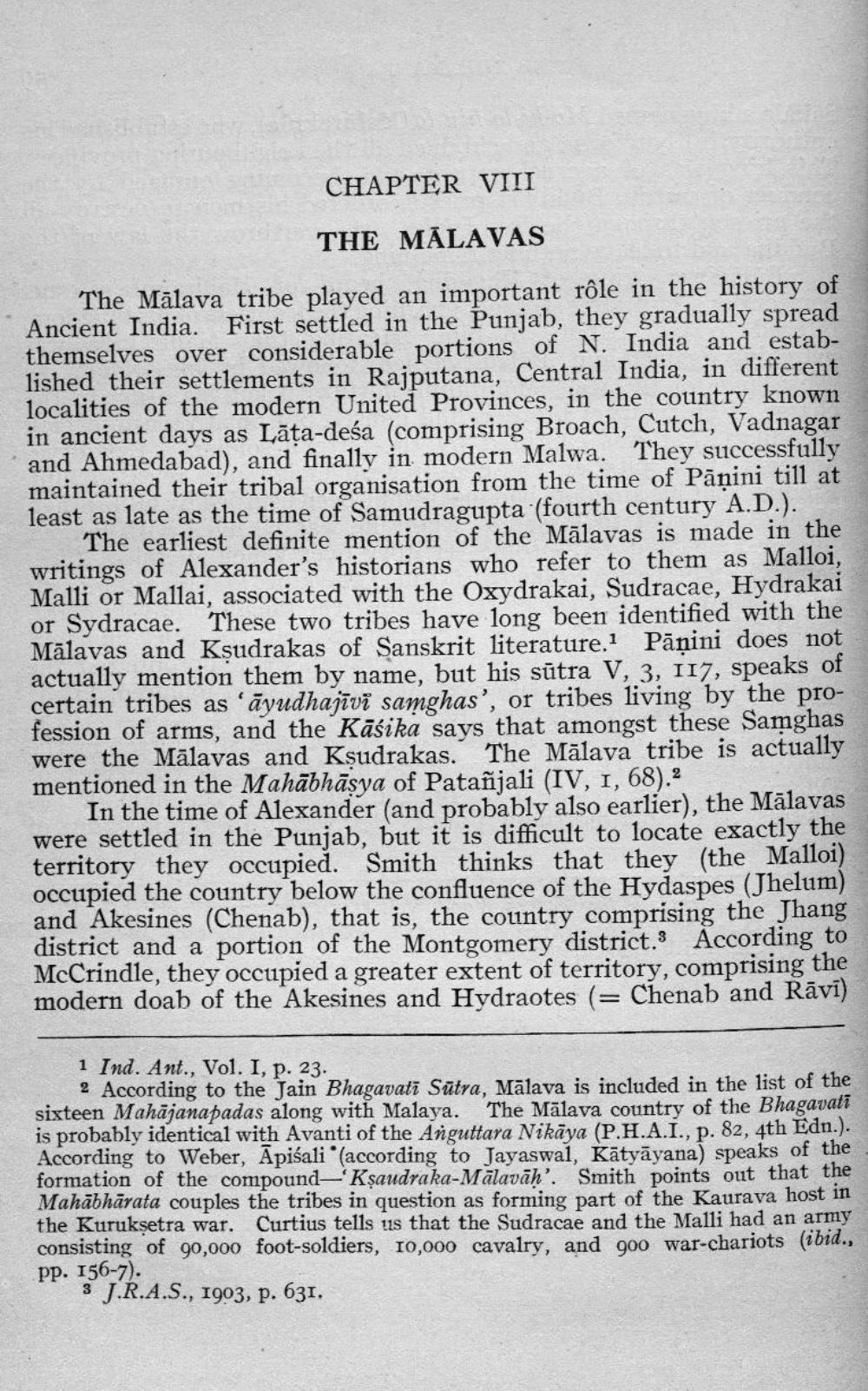________________
CHAPTER VIII
THE MĀLAVAS
The Mālava tribe played an important rôle in the history of Ancient India. First settled in the Punjab, they gradually spread themselves over considerable portions of N. India and established their settlements in Rajputana, Central India, in different localities of the modern United Provinces, in the country known in ancient days as Lāta-deśa (comprising Broach, Cutch, Vadnagar and Ahmedabad), and finally in modern Malwa. They successfully maintained their tribal organisation from the time of Pāṇini till at least as late as the time of Samudragupta (fourth century A.D.).
The earliest definite mention of the Mālavas is made in the writings of Alexander's historians who refer to them as Malloi, Malli or Mallai, associated with the Oxydrakai, Sudracae, Hydrakai or Sydracae. These two tribes have long been identified with the Mālavas and Ksudrakas of Sanskrit literature.1 Pāņini does not actually mention them by name, but his sūtra V, 3, 117, speaks of certain tribes as 'āyudhajīvi samghas', or tribes living by the profession of arms, and the Kāśika says that amongst these Samghas were the Mālavas and Ksudrakas. The Mālava tribe is actually mentioned in the Mahābhāsya of Patañjali (IV, 1, 68).
In the time of Alexander (and probably also earlier), the Mālavas were settled in the Punjab, but it is difficult to locate exactly the territory they occupied. Smith thinks that they (the Malloi) occupied the country below the confluence of the Hydaspes (Jhelum) and Akesines (Chenab), that is, the country comprising the Jhang district and a portion of the Montgomery district. According to McCrindle, they occupied a greater extent of territory, comprising the modern doab of the Akesines and Hydraotes (= Chenab and Rāvi)
1 Ind. Ant., Vol. I, p. 23.
2 According to the Jain Bhagavati Sūtra, Mālava is included in the list of the sixteen Mahājanapadas along with Malaya. The Mālava country of the Bhagavati is probably identical with Avanti of the Anguttara Nikāya (P.H.A.I. p. 82, 4th Edn.). According to Weber, Apisali (according to Jayaswal, Kātyāyana) speaks of the formation of the compound-Ksaudraka-Mālavāh'. Smith points out that the Mahābhārata couples the tribes in question as forming part of the Kaurava host in the Kuruksetra war. Curtius tells us that the Sudracae and the Malli had an army consisting of 90,000 foot-soldiers, 10,000 cavalry, and goo war-chariots (ibid., pp. 156-7).
3 J.R.A.S., 1903, p. 631.




